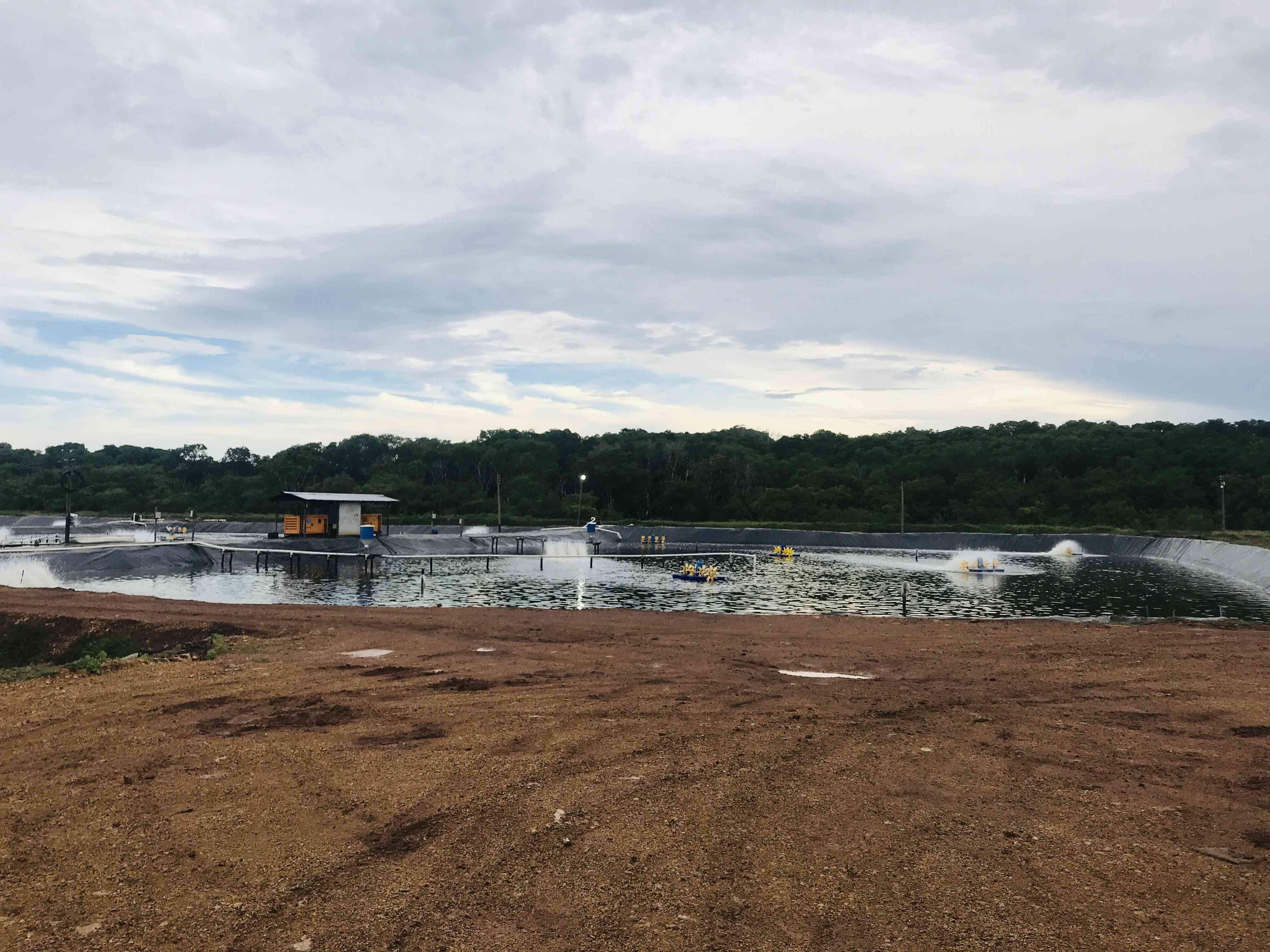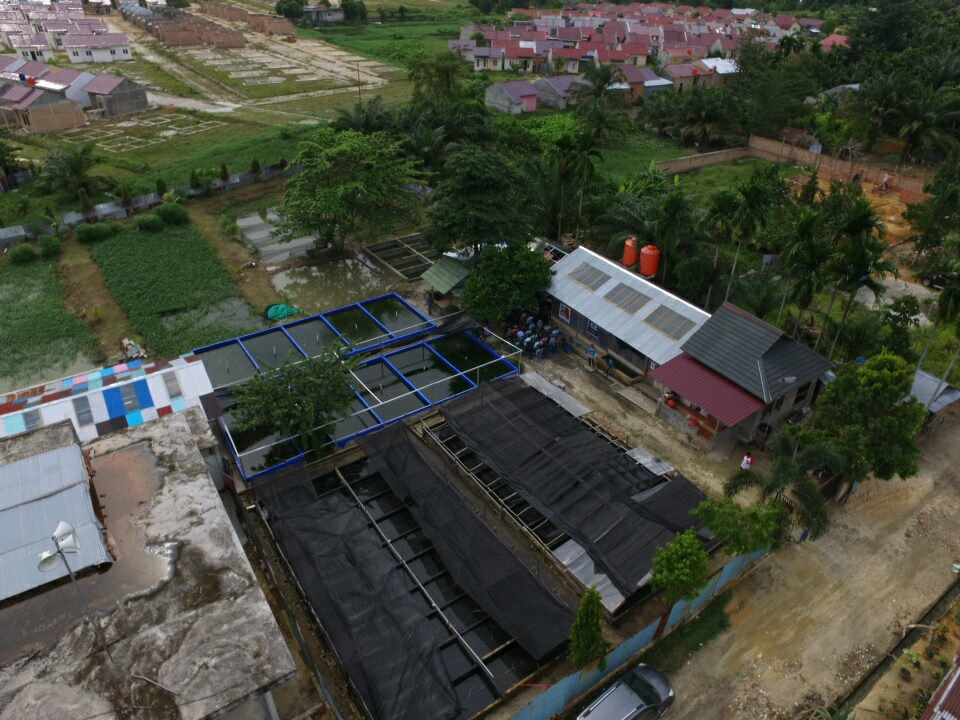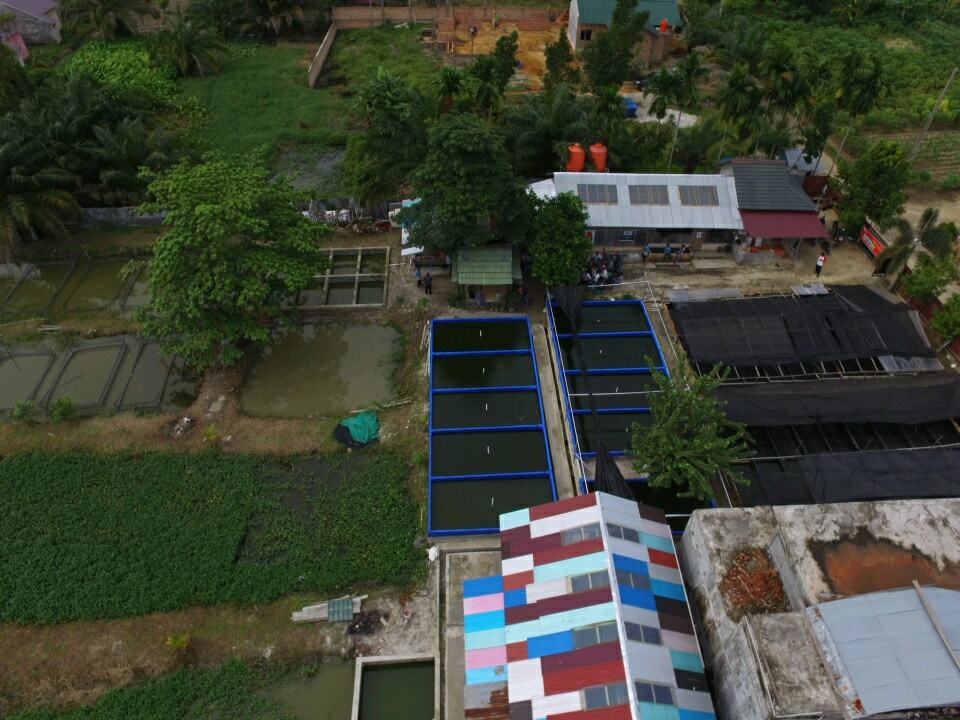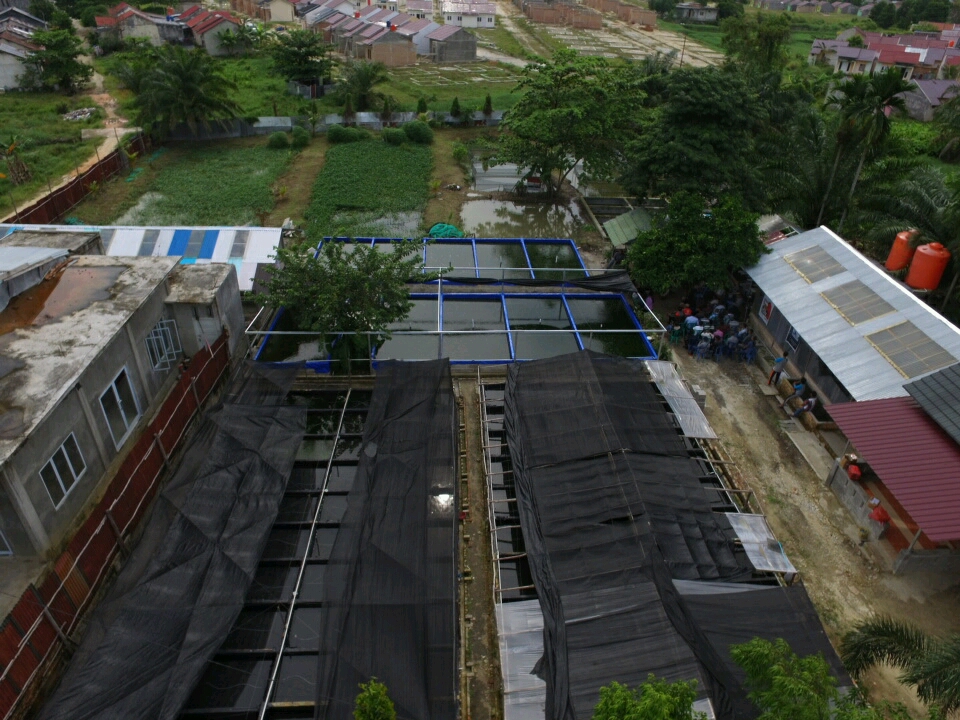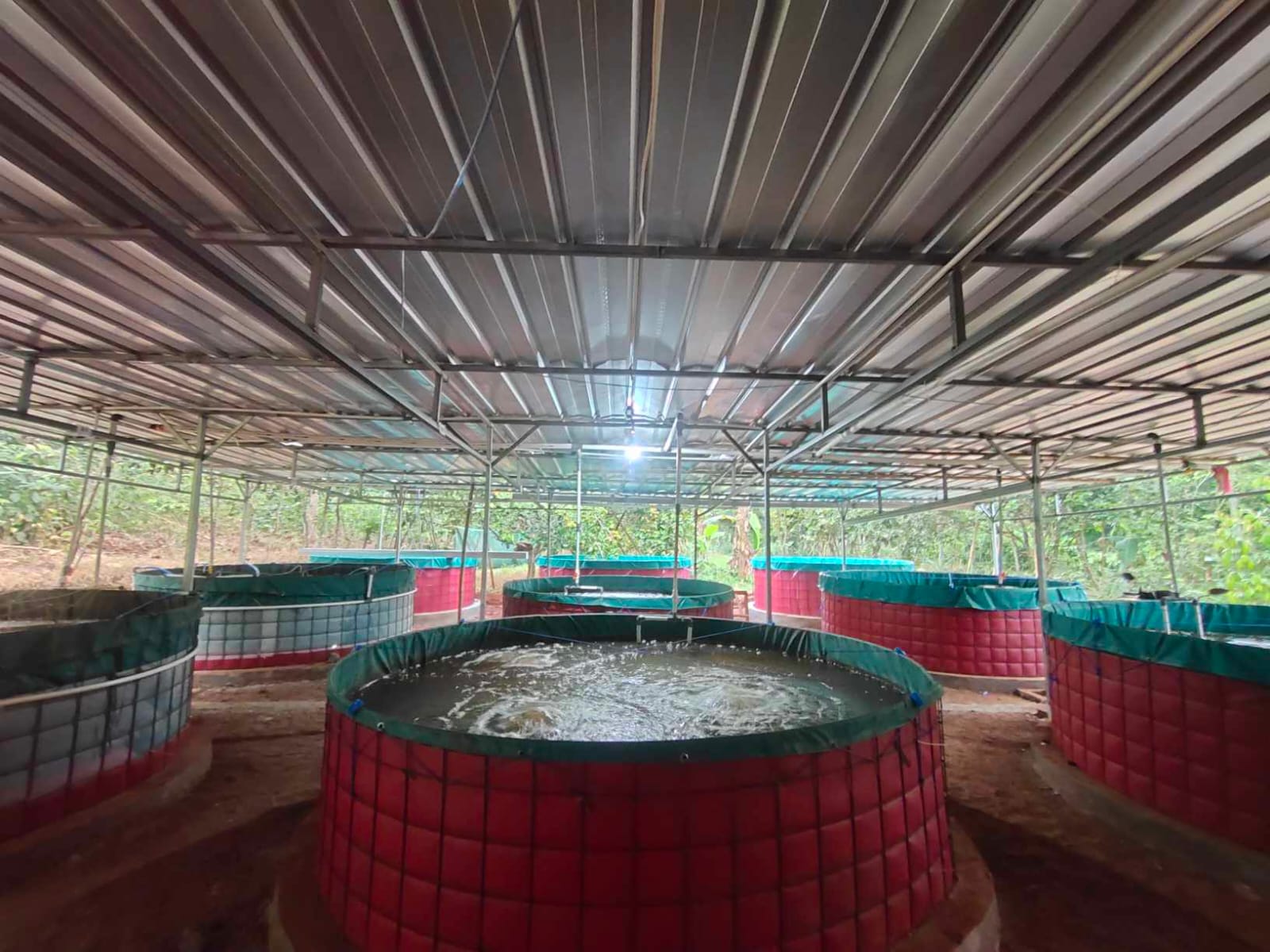For many fish farmers, the nightmare scenario is all too real: a sudden disease outbreak. When illness spreads, fish growth can grind to a halt, and in severe cases entire populations can die off, inflicting heavy economic losses on their farms. This stark reality underlines a time-honored principle in aquaculture: it is often better to prevent disease than to cure it. Yet even with careful pond preparation and constant vigilance, outbreaks still occur, and farmers find themselves forced to treat the affected fish.
In such situations, treatment becomes essential. Fish farmers generally have two main approaches to medication: modern chemical drugs or traditional herbal remedies. Each approach comes with its own advantages and disadvantages, and understanding these differences is crucial for making the right decision in each situation.
Methods of administering medication to fish
Before discussing specific medications, it is important to understand how treatments are administered. Broadly speaking, there are three principal methods: medicated baths (immersion), medicated feed, and injection. Each approach is suited to different conditions and disease types:
1. Immersion (bath treatment)
Bath treatments, or immersion therapies, are among the oldest and most common ways to treat fish diseases. They are especially effective against external infections such as parasites, fungi, and certain bacteria. In an immersion treatment, fish are submerged in a tank or pond containing dissolved medication. This can be done in the main culture pond or in a separate quarantine tank for better control. The goal is simple: allow the medication solution to make direct contact with the fish’s body so that the active ingredients can kill pathogens attached to the fish’s skin or gills.
Immersion treatments are often categorized by duration:
- Short-term immersion (5 minutes to 1 hour): Used for intensive treatment of serious infestations by external parasites such as Trichodina species or Ichthyophthirius multifiliis (commonly known as white spot disease). Farmers might bathe fish in a solution of formalin (100–250 ppm) for 30–60 minutes or potassium permanganate (KMnO₄) at 2–5 ppm for 15–30 minutes, depending on the severity of the infection.
- Medium immersion (1 to 6 hours): Used for less acute infections or as a follow-up treatment after a short immersion. In these longer baths, medication concentrations are generally lower to avoid over-stressing the fish during the extended exposure.
- Long-term immersion (several days): Often used as a preventive measure for young fish (fry) or as recovery therapy after stressful events like transport. For example, adding common salt (sodium chloride) at 0.5–1 ppt (parts per thousand) to the tank for 3–5 days can help reduce osmotic stress and accelerate healing of minor wounds caused by light infections.
When used correctly, immersion treatments can be both effective and economical. However, they require careful control: mistakes in dosage, exposure time, or water conditions can severely stress the fish or even cause fatalities. For these reasons, fish farmers must measure dosages carefully and monitor water conditions closely during treatment.
2. Medicated feed
Treating fish by adding medicine to their feed is considered one of the least stressful methods, since it spares the fish from direct handling — unlike baths or injections. The medication usually comes in liquid or powder form and is sprayed onto or thoroughly mixed into the feed pellets, often with a carrier like fish oil to help it stick. This approach allows farmers to treat many fish at once, making it especially efficient in dense, intensive farming systems.
However, this strategy succeeds only if the fish are still eating, typically in the early stage of an infection. If the disease has advanced and the fish lose their appetite, medicated feed becomes ineffective. Additionally, the feed must be prepared carefully to ensure each fish receives the correct dosage, avoiding negative effects on both the fish and the environment.
3. Direct application to the fish’s body
Direct application of medication to a fish’s body is a more targeted approach, often used when an infection is localized or affects only a small number of fish. This technique is typically reserved for larger fish that can be handled individually. The two main forms of direct treatment are injection and topical application (known as “smearing”).
For injection, the drug is delivered directly into the fish’s body either intramuscularly (into the muscle) or intraperitoneally (into the body cavity). Intramuscular injections are usually given along the back — typically between the third and fifth scale from the head — at an angle of about 30 to 40 degrees. Intraperitoneal injections are made in the abdomen, between the pelvic fins or near the anus, at roughly a 30-degree angle. This technique is highly effective for treating systemic infections such as Aeromonas or Streptococcus, since the medication enters the fish’s circulatory system directly. However, injections must be performed by trained personnel to avoid injury or accidental overdose.
Topical or “smear” treatment involves applying medication directly onto a wound or an infected area of the fish’s body. This approach is useful for external infections such as ulcers, open sores, or localized fungal growth. Typical medications include antiseptics like povidone iodine, antibiotic ointments, or herbal extracts with antimicrobial properties. However, this method is practical only when the number of infected fish is small and the fish are large enough to handle one by one.
Although direct application methods can precisely target an infection, their main limitations are the labor and time required, since they cannot be done en masse. Consequently, these techniques are usually reserved for broodstock, ornamental fish, or other high-value specimens. On the plus side, they ensure accurate dosing and minimize contamination of the water, making them ideal for intensive treatment of individual cases.
Chemical treatments in aquaculture
The use of chemical agents to treat fish diseases is a widespread practice in aquaculture. Common chemicals employed in fish farming include:
- Chlorine: Used as a disinfectant to kill pathogenic microorganisms, helping to prevent disease outbreaks.
- Formalin: Applied to treat external parasites and fungal infections on fish.
- Malachite Green Oxalate (MGO): An effective agent against fungal and parasitic infections.
- Oxytetracycline (Terramycin): A broad-spectrum antibiotic used for internal bacterial infections.
These compounds, when used under proper conditions, can help fish farmers manage and control disease in their stocks, ensuring healthier fish and more reliable yields.
A diverse range of commercially available fish medications and chemical treatments is stocked at the Lili Fisheries Supply Store in Metro City: Luhkan Kota Metro/Supriono
Advantages and disadvantages of chemical treatments
One of the primary advantages of chemical treatments is their effectiveness. With an accurate diagnosis and proper dosage, healing effects can often be observed within a relatively short period. This rapid response is crucial in acute infection cases, which can spread quickly and cause massive fish die-offs if not addressed promptly. For this reason, chemical drugs often become the first line of defense for aquaculturists facing urgent disease outbreaks.
Moreover, chemical treatments come in various forms: liquid solutions, powders, tablets, and even injections allowing flexibility in application. Farmers can choose the most appropriate method for their situation, whether it is a bath immersion, medicated feed, or direct injection. The speed at which chemical treatments can suppress infection symptoms is especially valuable in large-scale operations, where any delay in treatment may lead to significant economic losses.
However, there are notable drawbacks to using chemicals. A major concern is cost: chemical drugs can be relatively expensive, particularly for small-scale farmers or those in remote areas with limited access to aquaculture pharmaceuticals. Continuous reliance on antibiotics like oxytetracycline also carries the risk of fostering antibiotic-resistant bacteria, making future disease outbreaks harder to control.
Chemical treatments pose potential risks to both the environment and consumers. Residues of drugs left in fish can endanger human health if proper withdrawal periods are not observed before harvest. In the aquatic environment, dissolved chemicals can upset the ecological balance by killing non-target organisms, such as plankton and beneficial microbes that are vital to the food chain and water quality. These factors underline the importance of careful and responsible use of chemical treatments in aquaculture.
Herbal treatments
In recent years, fish farmers have increasingly explored herbal remedies as natural, eco-friendly alternatives to conventional drugs. Medicinal plants contain active compounds that can inhibit microbes or boost fish immunity.
- Garlic (Allium sativum) contains allicin and related compounds with broad antimicrobial and immunostimulant effects.
- Guava leaves (Psidium guajava) have strong antibacterial activity that accelerates wound healing and helps prevent infections.
- Sambiloto (Andrographis paniculata) is rich in andrographolide, which provides antibacterial and anti-inflammatory benefits (and has been reported to exhibit antiviral and immune-stimulating properties as well).
- Betel leaf (Piper betle), long used as an antiseptic, has been shown to strongly inhibit aquatic pathogens and even improve fish survival under bacterial challenge.
- Indian almond (ketapang) leaf (Terminalia catappa) releases tannins and flavonoids that both stabilize water chemistry (gradually lowering pH as they decompose) and exert antibacterial effects.
- Turmeric (Curcuma longa), valued for its active ingredient curcumin, is renowned for anti-inflammatory action and for enhancing disease resistance in fish.
- Noni (Morinda citrifolia) – a tropical fruit plant – has natural immunostimulant properties: its leaf and fruit extracts have been shown to significantly boost fish immunity and resistance to infections.
A demonstration on incorporating herbal medicine into fish feed for disease prevention and treatment was conducted for the Jarang Taruna farmers' group in Lubuk Begalung District, Padang, Indonesia: Luhkan Kota Padang/Fipinal Sinawa
Advantages and disadvantages of herbal therapies
Aquaculturists are drawn to herbal treatments chiefly because they are readily available and inexpensive. Many of these plants can be harvested locally or even grown in home gardens, and preparations (teas, extracts or powders) cost far less than commercial antibiotics. Unlike synthetic drugs, herbal remedies tend to pose minimal risk of harmful residues in fish or water, and they are generally benign to the environment. This natural approach can also help avoid a major problem of conventional antibiotics: resistance. By boosting fish immune defenses and relying on complex plant compounds rather than single-target chemicals, herb-based treatments make it harder for pathogens to develop immunity. In other words, medicinal plants not only fight disease but also strengthen fish health. (Indeed, numerous studies have confirmed that herbal additives can raise antibody levels and disease resistance in farmed fish.)
However, herbal remedies have some drawbacks. Dosing is difficult to standardize: farmers often rely on traditional knowledge or trial-and-error, which can lead to under- or over-use of the plant extracts. Preparing effective herbal treatments also requires care – knowing which part of the plant to use, how to extract it, and how to administer it safely to fish. And because plant compounds are generally milder than drugs, cures tend to act more slowly. In acute outbreaks, where rapid treatment is critical, herbs may not act fast enough on their own. Nonetheless, for routine health management and prevention in sustainable aquaculture, many experts see herbal therapies as a valuable, long-term alternative.



















